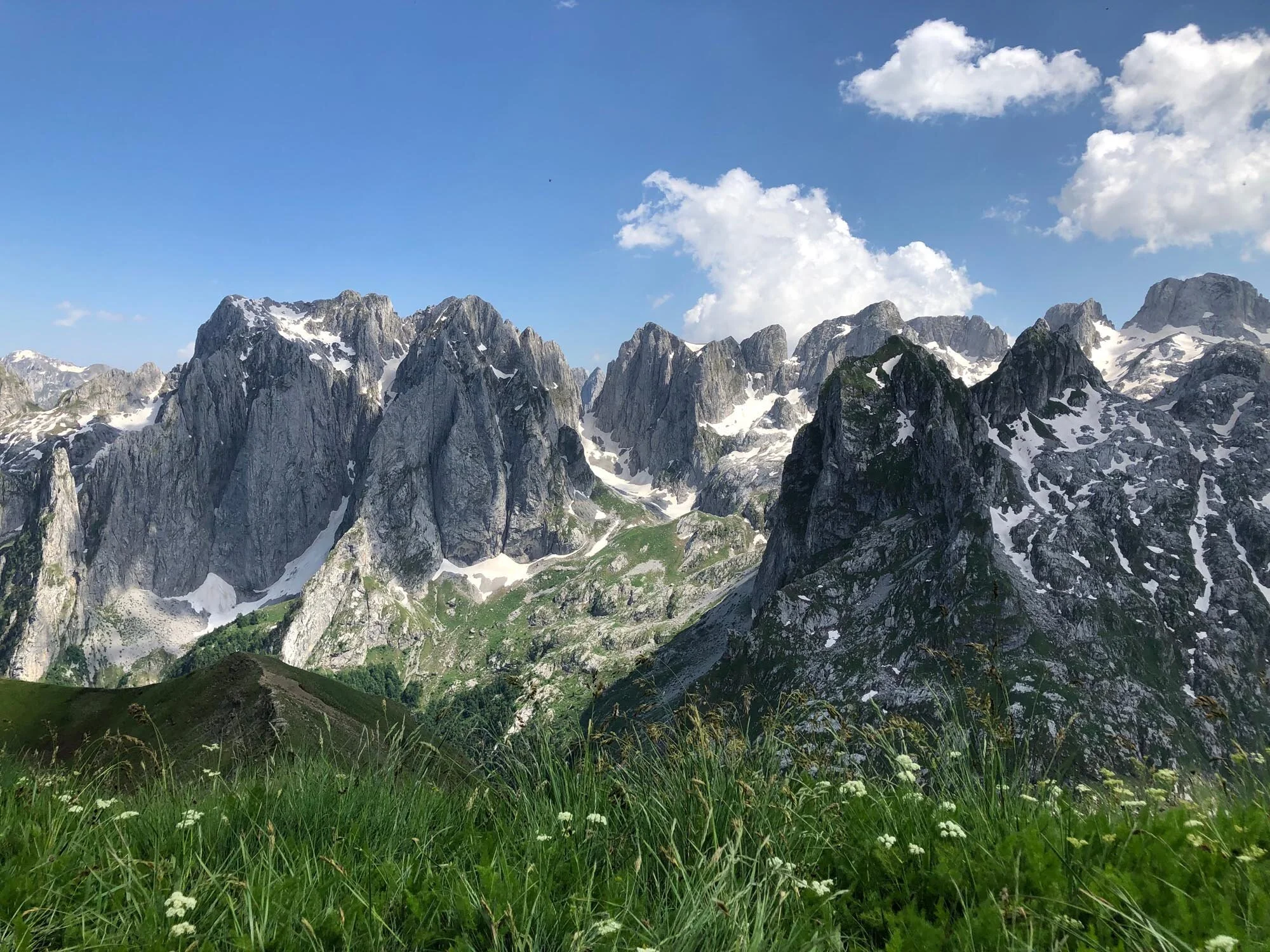Your Ultimate Trek Training Guide
When there are so many things to remember whilst preparing for a challenge (equipment, vaccinations and so on), it can be easy to forget about the trek itself. It's important to remember that the fitter and healthier you are for the challenge, the less it will feel like you’re simply ‘surviving’ the trek, and more like you are having the experience of a lifetime (which is how it should feel!). But how do you train for your challenge?
Here are our top tips.
Make sure you’ve got the right kit
Good quality walking boots and socks are a must for your trek - but imperative for training too. A supportive boot will provide the right ankle support for you throughout long training walks - just make sure you break them in before a long hike to prevent blisters. But, the right boots with the wrong socks won't be much help. Make sure you’ve got proper wool walking socks to prevent blisters and other injuries - there are some great blister-preventing socks that will ensure you’re comfortable both on your trek and beyond. Another good way to help avoid blisters is to wear two pairs of socks, an inner liner pair and a thicker outer pair for cushioning. For more about walking boots check out our guide, Walking Boots 101.
It’s also a great idea to practice trekking with your day-pack on. This will allow you to try out your bag with a bit of weight in it (more on that later) and also mean you can test out adjusting the straps to ensure they don’t rub when you get onto your trek.
Start early
You should look to build your trek fitness and strength gradually over time. Making a plan early, and easing yourself into it is the best way to develop something you'll actually stick to. By gradually adding training into your routine, you'll find everything more enjoyable and will avoid injury too.
Worried about how you’re going to find time to add training into your usual schedule? Check out our how-to guide here!
Design a trek training plan
Whether it’s setting aside two sessions a week to hit the gym, or writing a full week by week training schedule, focussing on an actual training plan will really help you in the long run. A good plan will include varied exercises to build up both your trekking stamina and strength, as well as trekking across different terrains. Your plan may include:
1) Building your Leg Strength
Your legs will take on the bulk of the strain during your challenge. Although walking will make up the majority of your training, it is a good idea to incorporate some leg-focussed resistance training too. Having strong legs will ensure you’ll be less prone to injury and mean that you’ll find carrying a weighty backpack easier.
If you are hitting the gym, opt for compound movements such as squats and lunges. They will not only increase strength in your glutes, hamstrings and quads, but improve knee stability which is crucial for the downhill portion of your trek. Why not begin with bodyweight exercises and, as your strength increases, add weights in gradually increasing increments. Bonus: Shoulder and back strengthening exercises may help when carrying your daypack!
If you don’t have access to a gym, YouTube has a great selection of bodyweight exercise videos for building leg strength that you can do at home with no equipment!
2) Hill-walking
One of the main challenges of mountain trekking is persistent incline walking. It is therefore important that, when training, you opt for hilly routes wherever possible. You can search for walking routes in your local area and filter them by difficulty on the Ramblers Website.
If there aren't any suitable routes near you, why not head to the gym for an incline walk on the treadmill? To increase the intensity, try walking on the treadmill with a backpack on or with weights in your hands.
3) Interval Training
Although there is no real way to prepare your body for altitude without actually going to altitude, some trekking experts claim that interval training is the best way to go for those who don't have handy access to several-hundred-metre-high mountains at home. Interval training involves elevating your heart rate significantly before allowing a short period of recovery. This can help to prepare the cardiovascular system for altitude by mimicking the stress of lower oxygen levels on the body at high altitudes.
One of the simplest ways to incorporate interval training into your training plan is running short sprints, walking, and repeating. Add in an interval workout once a week and you'll be surprised how quickly your fitness improves!
4) Practice carrying a weight
On your trek, you'll be carrying a camelback of water to fuel your walking. You should practice carrying something heavy for a long time whilst you train to ensure your back, body and stamina will be ready for it!
5) Incorporating what you love
Your main goal when designing your training plan should be to improve your overall fitness and strength. So whether you're a keen runner, cycler, swimmer or football player, don't completely give up the sports you love to make room for trek training. Everything counts!
Interested in hearing how our past participants managed it? Read their top tips!
Don’t underestimate the importance of mental strength
Multi-day trekking in mountains is certainly an intense physical test, but it’s important not to forget the mental strength that a multi-day trek requires. More often than not, a successful summit is all down to sheer willpower. It’s clear that mental stamina is vital, and physical training can help strengthen this: every time you push yourself to reach your goals whilst training, you are pushing yourself mentally, too.
Go on a practice trek
It may sound obvious, but the best way to prepare for a long trek? Going on a long trek!
Ultimately, you need to practice walking - as that's what you're going to be doing. The best training we've found tends to be practice treks, and whilst they are preferably done outdoors, where you can practice on terrain similar to that you’ll be trekking on, they can be done on the treadmill if needs must. Walking on the treadmill at a steep incline can help train for the trickier aspects of the trek, and is the type of training you can easily slot into your normal routine.
Alternatively, why not try to book a trip away somewhere which you can dedicate to walking. A weekend in the Lake District, or a few nights in the Highlands, is the best way to practise walking long distances back-to-back over several days. This can also be a perfect opportunity for your team to go away together and bond before the challenge!
If you can’t manage any time away., there are plenty of shorter treks you can do in the UK. Check out our guide to the best British hikes to find one that may suit you. Even just practising walking outside for 4/5 hours at a time is going to hugely pay off come the summer!
However you decide to train, it’s important to remember that your challenge (and training!) is a marathon not a sprint; take it easy and don’t try to push yourself too much, too soon.
Let us know all your top training tips in the comments below!














